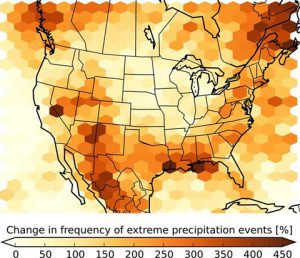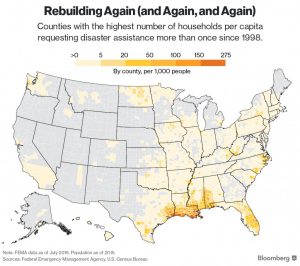Seth Borenstein of AP reported today on a new study published in Nature Climate Change that projects at least a fivefold increase in downpours in the Gulf Coast, Atlantic Coast and Southwest. The results of the study using a high-resolution computer model which can resolve smaller scale weather like thunderstorms shows that heavy rains are likely to cause significant flooding in those areas because soils cannot absorb more than a certain fraction of an inch an hour (depending on the soil type). You can read his report at https://apnews.com/9aacfd5603cb475eb461960f4e05b948/Study:-Warming-to-trigger-3-times-as-many-downpours-in-US.
Meanwhile, floods are on the increase in places like Texas due to rapidly increasing urban development, which paves over large tracts of land, reducing the ability of the ground to take in water. This increases the potential for dangerous flash floods in heavy rains. You can read more about this in Emergency Management at https://www.emergencymgmt.com/disaster/With-building-boom-comes-higher-flood-risk.html.
Some areas that are affected by flooding are rebuilt only to flood again in later years, resulting in multiple claims for the same property. FEMA recently compiled a map of the areas with the most repeat claims for disaster assistance. Many of those areas are in the Southeast. Politicians of both parties have at various times in the past stated that properties that have experienced multiple disasters should not be allowed to collect disaster relief. That would make it much more risky for people to live in these areas. You can read about their map at https://www.bloomberg.com/view/articles/2016-11-29/the-areas-america-could-abandon-first.

